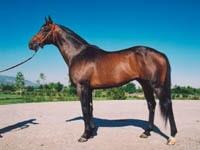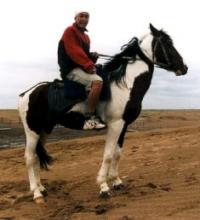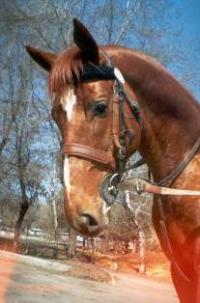Вы здесь
Heavenly horses of ancient Fergana.




Travels in Fergana.
“Molla brought home a small piece of meat and asked his wife what can be cooked from it.
- All you want.
“Then prepare everything.”
100 stories about Khoja Nasreddin.
A trip to Fergana.
Unfortunately, the history of ancient Fergana is studied rather poorly, which is primarily due to the lack of written sources. Herodotus, Ctesias, Strabo, Arrian, and a number of other famous ancient authors who wrote about the peoples of Central Asia, do not directly mention her, giving us to build all sorts of assumptions (is it Parkan Fergana, etc.).
Little information was left about it by historians of the early Middle Ages. Among the lucky exceptions are the Chinese chronicles of the end of the first millennium BC, covering in sufficient detail the relationship between the Middle Kingdom and the state of Davan, which occupied all or most of the modern Fergana Valley and later became part of the Great Silk Road.
It is generally accepted that the Silk Road was discovered by a Chinese diplomat Jian Lin in the II century BC. The Han emperor Wu-di sent Jian Lin to the Yuezhi in order to convince them to join the military actions against the steppe tribe of the Huns, later known as the Huns (Huns).
The Huns terrorized North China, forcing the Han Chinese to build the Great Wall, and also drove a number of other peoples from their homes, including the Yuezhi mentioned. The diplomatic mission of Jian Lin was delayed for 13 years.
During this time, he suffered a lot of misfortunes, visited the Huns in captivity, however, he learned a lot about the countries unknown to the Chinese. In particular, he happened to visit Davan (Fergana), about which he drew up a detailed description.
In his work “Shitsi”, the Chinese author Syma Qian reports that Emperor W-di (Woo-ti) received from Jian Lin information about the state of Davan, lying behind the Turfan oasis, to the west of Dunhuang, the last outpost of the empire.
The main news that aroused the interest of the monarch concerned the breeding in Davan of a special breed of horses - beautiful, enduring and sweating in blood, which allegedly testified to their heavenly origin. The Chinese called these horses “heavenly” - “Shan”.
It should be noted that at the time described the problem of providing horses for China was extremely sensitive. The empire waged continuous wars with its northern neighbors, who were plaguing it with regular raids. It was possible to strike the steppe inhabitants only with the presence of numerous cavalry, which was ruled out due to the lack of developed horse breeding among the Chinese: their horse breeds did not differ in physical virtues.
Evil Huns, of course, cut off the supply channels for horses from the adjacent northern regions, which deprived China of the possibility of revenge.That is why Wu-di came to the excitement of joy and in 104 BC. Hastily sent an embassy to the capital of Davani, the city of Ershi, headed by the nobleman Che Ling, who was charged with convincing the Davanians to accept Chinese citizenship and immediately sell the “heavenly” horses for the Chinese army.
As it turned out, the Ferghans of that time had specific ideas about hospitality. However, perhaps they were saddened by the ambitious tone of the ambassador, who demanded immediate submission. In any case, the emperor's proposal was rejected by the davans, and the Chinese ambassador, who was returning home, was killed and robbed in the Fergana city of Yucheng, at the direction of Prince of Davan Mugua.
Upon learning of the sad fate of Chae Ling, the emperor was extremely angry and immediately sent a punitive expedition of 6,000 horsemen and several tens of thousands of infantrymen, led by Li-Guan Li, an experienced commander, to Dawan.
However, the forces of the corps Li Guang Li was not enough to join Davani. More than half of the soldiers died on their way to Davan from cold and illness. After several clashes with the Ferghans and a bloody siege of Yucheng, it became clear to the Chinese that it would be impossible to take the capital of the country, the city of Ershi.
With the remaining warriors, Li Guan Li was forced to go to China for help. About 15% of the troops returned to their homeland. The emperor was again beside himself with rage and ordered to prepare a new march to Dawan, despite the timid protests of advisers who believed that all forces must be thrown into the war with the Huns.
Thus, in 102 BC Lee Guan Livnnow appeared under the walls of Ershi already with an army of 30,000 horsemen and 60,000 foot soldiers. Nevertheless, the Ferganians refused to surrender, as they were convinced of the inaccessibility of their city, which had not only a powerful fortress wall, but also a roomy citadel.
However, the Chinese showed miracles of military art: in addition to ordinary measures, they produced significant engineering work and diverted the river bed that fed the city. Then the assault guns punched a hole in the wall and the Chinese seized the outer part of the city.
This partial victory did not solve the problem, since the citadel was well fortified, and among its defenders were found specialists in wells. Before both sides, the prospect of a new long-term confrontation. At that moment, notables of the city of Ershi killed Prince Mugua, who was guilty of the conflict, and sent his head to the Chinese camp with a proposal for an armistice.
Its essence was to ensure that a further siege is meaningless, since the defenders of the city are full of strength, and nearby is the army of the Kangyu state, ready to strike at the Chinese at the right moment. In addition, the Ferghans declared, in case of the city’s fall, all valuable horses would be destroyed by them, which would deprive the Chinese of the main trophy. In the case of a truce, the Davanians were ready to give the Han Chinese a “Shan” and generally obey the will of the emperor.
Li Guang Li and his generals reasoned that it would be wiser to accept the offer of the Ferghans, since the outcome of the siege is unclear, and Kangüi spies were really noticed near the Chinese camp. After the siege was lifted, 300 “heavenly” horses were handed over to the Chinese, who were immediately chosen by the Han commanders from the herd represented by them.
As compensation, the winners were also transferred 3,000 heads of ordinary horses; In addition, Fergana was obliged to send 2 “heavenly” horses to the Celestial Empire each year. From this period on, China regularly received valuable breed horses from Fergana, which made it possible to gradually improve local horse breeding. In the following centuries, Chinese troops won many victories thanks to fast and hardy horses.
The exterior of bronze winged horses found in the burial of a Chinese general near Wu Wei in Gansu Province (II century AD) undoubtedly indicates the Ferghana origin of their breed. As for the bloody sweat, modern scientists have found that the cause of the "bloody sweat" was a special type of parasite, characteristic of this region of Central Asia up to the present.
It is curious that the location of the city of Ershi has not yet been determined. In 1948, the famous Soviet archaeologist, worthy of the honorary Fergana title, academician A.N. Bernshtam, put forward the hypothesis that Ershi was in the place of the Marhamat site of ancient settlement in the south of the Andijan region.
One of his arguments in favor of this particular area (and about a dozen of similar sites claims to the title of the ancient capital) was associated with cave paintings on the Aravan rock. Aravan rock rises above the village of Aravan, 20 km from Osh.
Here in 1891 a cave was discovered, on the walls of which an unknown author of approximately the 1st century AD. BC - 1st century AD The image of the hunting scene. The silhouettes of the depicted goats with horns thrown back indicate the Scythian (Saki) style of writing.
The figure also includes a horse and a mare with a foal, the perfect forms of which suggest a connection with the thoroughbred horses of the Chinese chronicles. The Markhamat site of ancient settlement is located 18 km from Aravan along the stream of the Aravan-sai small river.
It should, however, be noted that the modern Uzbek scientists disprove this hypothesis by A. Bernshtam, so close to the heart of the author of these lines.Anyway, the episode with the “heavenly” horses is a vivid episode in the little-studied history of ancient Fergana.
Authority:
Zotova Natalia Alexandrovna. Applicant at the Institute of Ethnology and Anthropology. Maclay Maclay Russian Academy of Sciences, Moscow. Professional interests - history, ethnography, national problems of the peoples of Central Asia, especially the Fergana Valley. https://www.fergananews.com/ancient/safed_bulon.html
Note:
The historical complex "Shah-Fazil" in the village of Safed-Boulogne, which is a place of mass pilgrimage for residents of the Fergana Valley, is currently being restored by joint efforts of Kyrgyz and Uzbek specialists.







